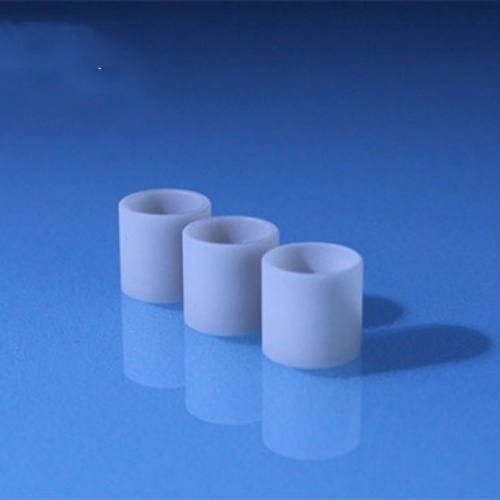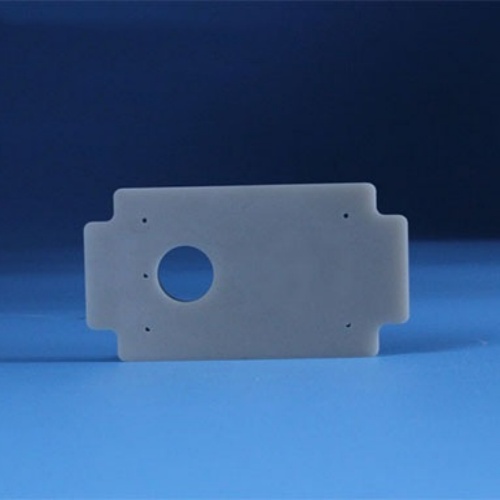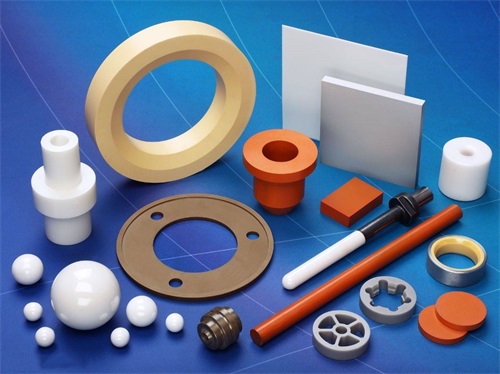Application of Macor Machinable Ceramics in the Field of Optical Devices
1、 Characteristics of Macor Machinable Ceramics
Macor machinable ceramic is a microcrystalline glass ceramic developed by Corning Incorporated in the United States, with the following unique properties:
- Excellent optical performance: Macor ceramics have high transparency and low optical distortion, making them suitable for optical components such as optical windows, lenses, prisms, etc.
- Good thermal stability: Its low thermal expansion coefficient and high heat resistance enable it to maintain dimensional stability at extreme temperatures.
- Excellent mechanical performance: High strength and hardness enable it to withstand high temperature and high pressure environments.
- Good chemical stability: Strong corrosion resistance, capable of long-term stable operation in harsh environments.
- Machinability: Macor ceramics can be processed through traditional mechanical processing methods such as turning, milling, grinding, etc., greatly reducing manufacturing costs.

2、 Application of Macor Machinable Ceramics in the Field of Optical Devices
(1) Optical window
Macor ceramics have significant advantages in the field of optical windows. Its high transparency and low optical distortion make it a key material for manufacturing optical windows. For example, it can be used to manufacture high-performance lenses and mirrors, improving the imaging quality of optical systems. In addition, the radiation resistance of Macor ceramics enables them to work stably in the cosmic radiation environment for a long time, making them suitable for optical windows in the aerospace field.
(2) Reflector mirror
Macor ceramic mirrors have the characteristics of high reflectivity and low loss, which can accurately reflect laser beams and improve the energy utilization and output power of laser systems. Its low thermal expansion coefficient and high chemical stability enable it to maintain stable operation even in extreme temperatures and harsh environments. For example, in laser systems, Macor ceramic mirrors are widely used in key components such as partitions, reflectors, and cavities.
(3) Laser system
The application of Macor ceramics in laser technology is very extensive. For example, in laser cutting equipment, Macor ceramic partitions can effectively isolate the heat exchange between the laser beam and the external environment, reduce thermal interference, and thus improve cutting accuracy and edge quality. In the field of laser welding, Macor ceramic reflectors can ensure efficient focusing of laser energy on the weld seam, achieving a splash free and high-strength welding effect.
(4) Medical devices
The biocompatibility and zero pore structure of Macor ceramics give them unique advantages in medical laser devices. For example, the cavity components of the laser surgical knife and the laser window for skin treatment are both made of Macor ceramics. Its high transmittance (visible light transmittance>90%) and radiation resistance can ensure precise transmission of laser energy.
(5) Semiconductor equipment
In semiconductor devices, Macor ceramics can be used to manufacture components such as optical windows, circuit substrates, and sensors. Its high-precision processing capability and good thermal stability enable it to meet the high requirements of the semiconductor industry for device accuracy and performance.

Macor machinable ceramics have broad application prospects in the field of optical devices due to their excellent optical properties, thermal stability, mechanical properties, and processability. Whether it’s aerospace, laser technology, medical devices, or semiconductor equipment, Macor ceramics can provide high-performance solutions for these fields.

Brudeze Ceramics supplies and sells a wide range of high-quality quartz glass, including alumina ceramics, zirconia ceramics, silicon nitride ceramics, aluminum nitride ceramics, silicon carbide ceramics, boron carbide ceramics, bioceramics, machinable ceramics, etc. We can meet the customization requirements of various ceramic products.
Tags: boron carbide ceramics
PREVIOUS:What are the characteristics of Macor’s machinable glass ceramics
NEXT:What are the characteristics and advantages of aluminum nitride ceramics
CATEGORIES
LATEST NEWS
- What is Macor processable g...
- The material properties and...
- The reason for the high pri...
- What are the preparation me...
- Why modify aluminum nitride...
- Thermal conductivity values...
- What is the thermal expansi...
- Thermal shock resistance of...
- The average coefficient of ...
- What is high alumina ceramic
